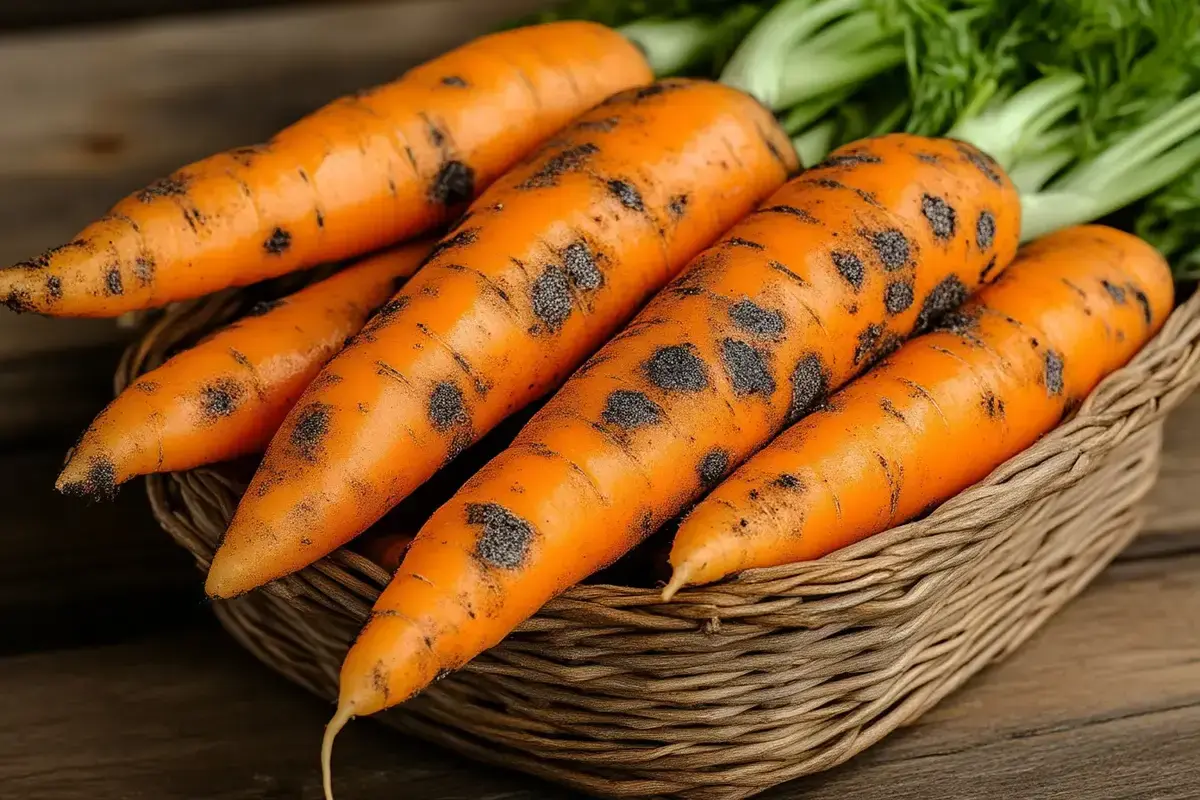In summary
- 🍂 Dangers of mold : Severe health risks due to mycotoxins in moldy carrots.
- 🔍 Identifying mold : Variety of appearances, from black spots to white or greenish dandruff.
- 🚫 Conduct to follow : Do not consume the contaminated parts; mycotoxins can extend beyond visible areas.
- 🔄 Prevention and reuse : Tips for preventing mold and methods for reusing decaying carrots.
Carrots, famous for their bright color and rich nutrients, face an invisible but dangerous enemy: mold. The black spots that sometimes appear on these vegetables pose an important question: are they safe to eat? This article addresses this question by exploring the risks of eating moldy carrots, methods for recognizing mold, health consequences, and preventative measures to keep your carrots free from contamination.
The dangers of mold
The presence of mold on carrots is not just an aesthetic problem; it also raises serious health concerns. Molds produce mycotoxinstoxic compounds that can cause reactions ranging from simple allergies to much more serious conditions like immunosuppression or neurological disorders. Susceptibility to mycotoxins can vary from person to person, making some individuals particularly vulnerable.
How to recognize mold on carrots
Detecting mold on carrots is crucial to avoid consuming unsafe foods. Mold can appear as black spots or white, fluffy films. Sometimes it can even take on a green tint. Each variation in color or texture can indicate a different type of mold, each with its own associated risks.
The consequences of eating moldy carrots
Eating carrots contaminated with mold can lead to several health problems. Mycotoxins are particularly treacherous because they are not always visible to the naked eye and can infect parts of the vegetable that appear healthy. Symptoms of poisoning can include digestive upset, allergic reactions, and in more severe cases, long-term damage to vital organs.
How to deal with mold-contaminated carrots
Management of carrots affected by mold must be rigorous. It is advisable to discard any core that shows signs of contamination. Even cutting out the affected parts is not safe, as the mycotoxins could have spread far beyond the visibly damaged area. Completely eliminating these carrots from your diet is the safest way to prevent health risks.
Preventing Mold on Carrots
Preventing mold from growing on carrots starts with careful selection and proper storage. It is essential to choose carrots that are firm and free from any signs of rot when purchasing. For storage, keeping carrots in a cool, dry place and using them promptly after purchase greatly reduces the risk of mold developing.
Using carrots that are starting to go bad
If the carrots are showing signs of aging but are not moldy, they can still be used in creative ways. Processes like freezing or the soaking in water can extend their lifespan. These carrots can be perfect for soups, stews, or even juices, where their less crunchy texture is not a drawback.
By following these recommendations, you can safely enjoy the many benefits of carrots while avoiding the risks that mold and its mycotoxins can pose.

